In 1895, paleontologist George Reber Wieland discovered the fossil of a gigantic creature along the Cheyenne River in Custer County, South Dakota, USA. Wieland later transported the excavated fossils to the Peabody Museum of Natural History at Yale University, and it was designated as YPM3000.
When YPM3000 was cleaned and assembled for restoration, what appeared before everyone was a super giant sea turtle fossil. The fossil’s integrity is quite high, missing only the skull and the right hind limb. Paleontologists speculate that the missing right hind limb was due to a past attack by predators, torn apart by massive external forces. In 1898, a second fossil of another giant sea turtle species was also discovered in the same area, which still retained its skull.
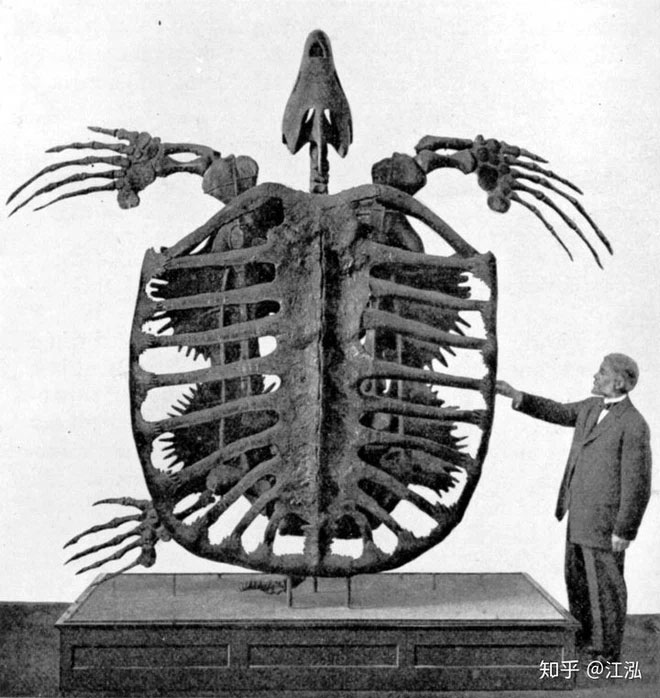
Super giant sea turtle fossil.
After studying the fossil of this prehistoric giant sea turtle, Wieland named this large sea turtle species Archelon ischyros, derived from Ancient Greek “ἀρχη” (meaning “first, earliest”) and “χελώνη” (meaning “turtle”).
In 1900, Wieland named a second species Archelon marshii. By 1909, Wieland recognized that the ancient sea turtle Archelon marshii actually belonged to the Protostega species rather than Archelon, and thus renamed it Protostega marshii.
In 1902, paleontologists discovered a third ancient sea turtle fossil along the Cheyenne River, and this time, the fossil was even more complete than the previous two species. Ninety years later, in 1992, the fossil of the fourth ancient sea turtle species (Archelon) was found in Oglarakta County, South Dakota; this was the largest ancient sea turtle fossil ever discovered and was named Brigitta.
Ten years after the discovery of the fourth giant sea turtle fossil, the fifth ancient sea turtle fossil was also found in Cooperstown, North Dakota, but its completeness was not high. To date, we have discovered a total of five ancient sea turtle fossils.
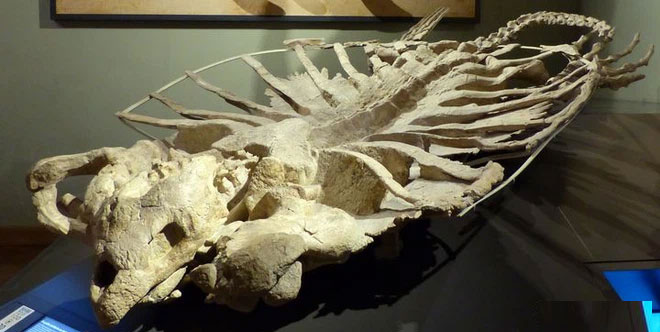
Archelon is the largest known sea turtle species.
Archelon is the largest sea turtle species ever known. The length of the YPM3000 specimen reaches 3.52 meters, but it clearly does not represent the actual size of this ancient sea turtle species. Meanwhile, the Brigitta fossil is the largest known specimen of Archelon, measuring 4.6 meters in body length, with a width between the flippers of 4 meters and an estimated weight of about 2.2 tons. Compared to the largest sea turtle species today – the leatherback turtle – Archelon is indeed much larger; in fact, the leatherback turtle weighs only about 700 kg, with a few exceptionally large individuals reaching nearly 1 ton, still significantly smaller than Archelon.
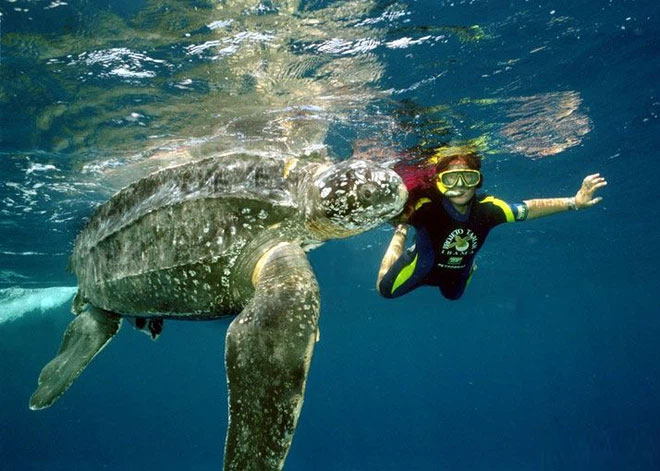
The leatherback turtle is the largest sea turtle species today, ranking as the fourth largest reptile after three species of modern crocodiles.
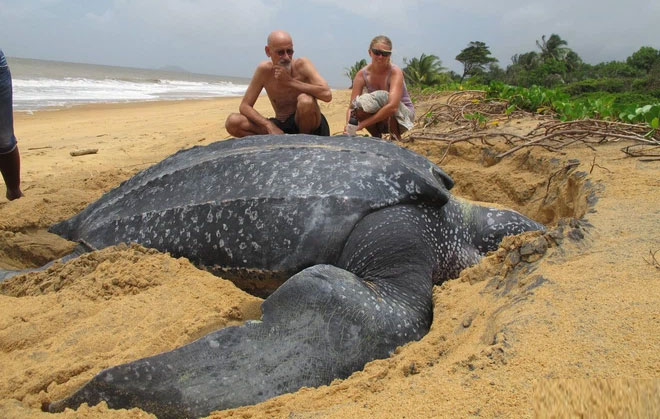
The leatherback turtle is the only surviving species in the genus Dermochelys. They are easily distinguished from other sea turtle species today because they lack a hard shell. Instead, their backs are covered with flesh and skin.
The appearance of the Archelon sea turtle is very similar to today’s leatherback turtle, and there is a certain relationship between the two species. The Archelon sea turtle has a large, elongated head, even longer than the upper body of an adult human. The front of the Archelon’s mouth resembles a parrot’s beak, with a hard, horn-like beak and a very powerful bite.
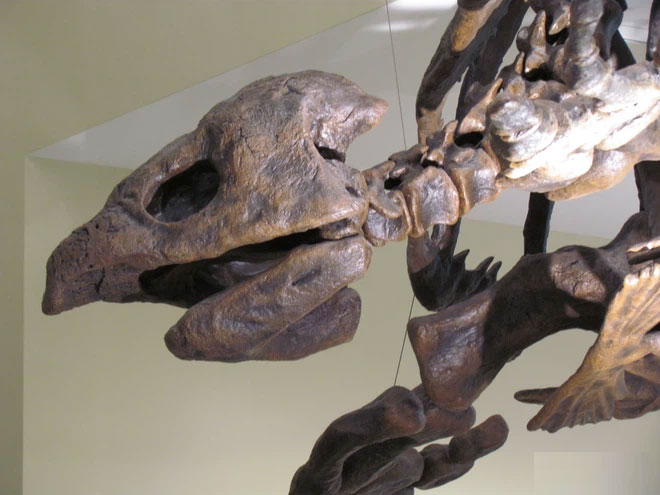
The giant Archelon turtle is covered with tough skin instead of a hard shell like land turtles.
The body of the Archelon sea turtle is oval-shaped, with ribs fused together to form a supportive structure for its large body. Like the leatherback turtle, the giant Archelon is covered with tough skin instead of a hard shell like land turtles. On the back of the Archelon turtle is a thin, short tail, and its limbs have long since evolved into flippers for swimming, with the front flippers being very large while the rear ones are relatively small. From a fossil perspective, the ratio of the bone structure of the Archelon’s forelimb is very large, indicating that it primarily relied on its front flippers for swimming.
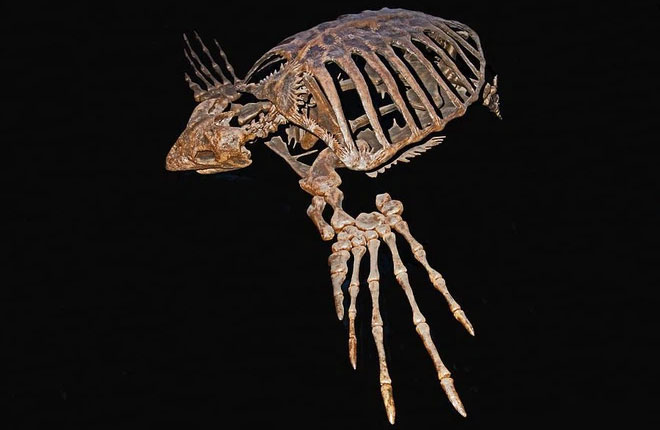
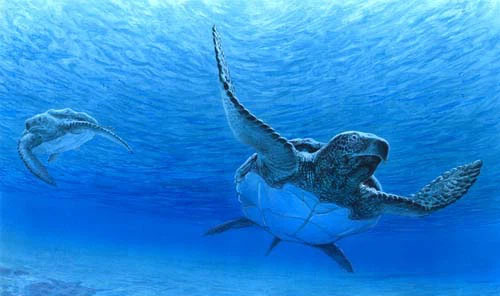
Considering the body structure of Archelon, they are not suited for long-distance swimming in deep seas.
The Archelon sea turtle lived during the Late Cretaceous period, approximately 80 to 74 million years ago. Fossils indicate they inhabited the western inland seaway, a warm shallow sea that divided North America into two parts. Given the body structure of Archelon, they were not suited for long-distance swimming in deep waters, so they spent most of their time in shallow seas. Compared to leatherback turtles, Archelon was much more carnivorous; they would dive to the seabed to search for hard-shelled clams, using their mouths to crush the hard outer shells and consume the soft insides. Additionally, Archelon’s diet may have included various mollusks, squid, fish, and more.
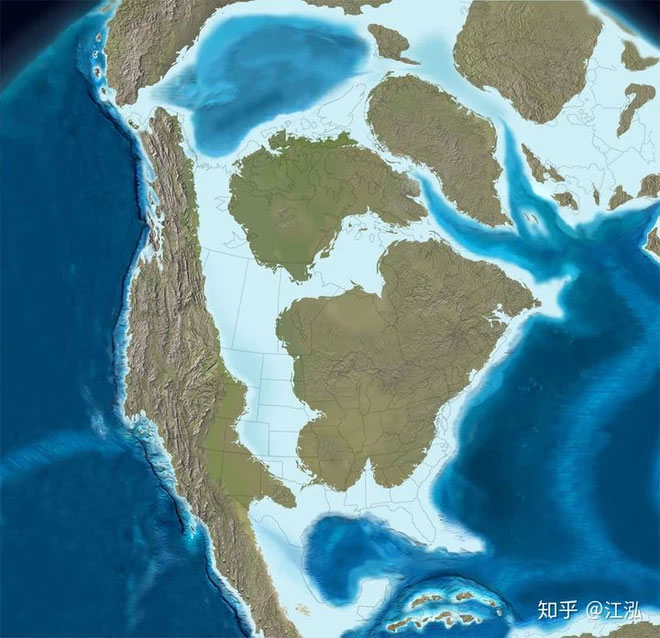
North America 75 million years ago.
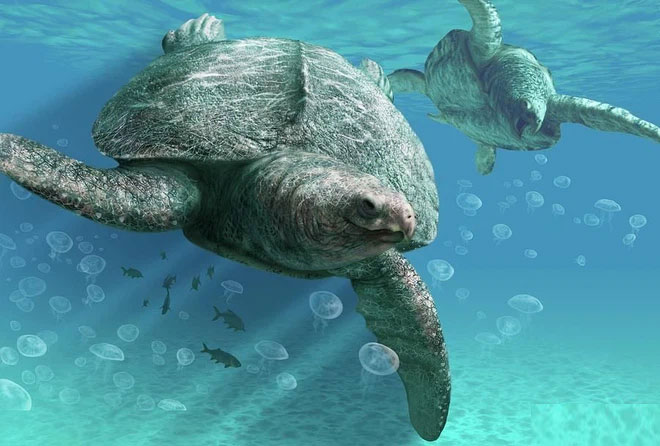
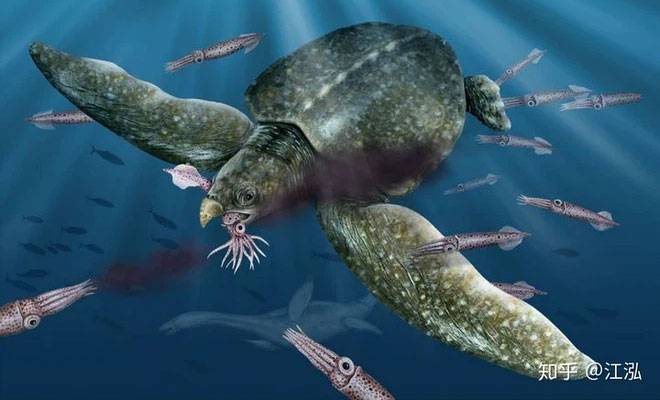
Restoration image of the Archelon sea turtle.
Archelon disappeared 74 million years ago. Paleontologists believe that the reasons for their extinction include terrestrial predators and marine carnivores, which posed a serious threat to the existence of primitive sea turtles. At the same time, abnormalities in the ocean such as fluctuating temperatures made it difficult for them to survive until the end of the Cretaceous period.




















































